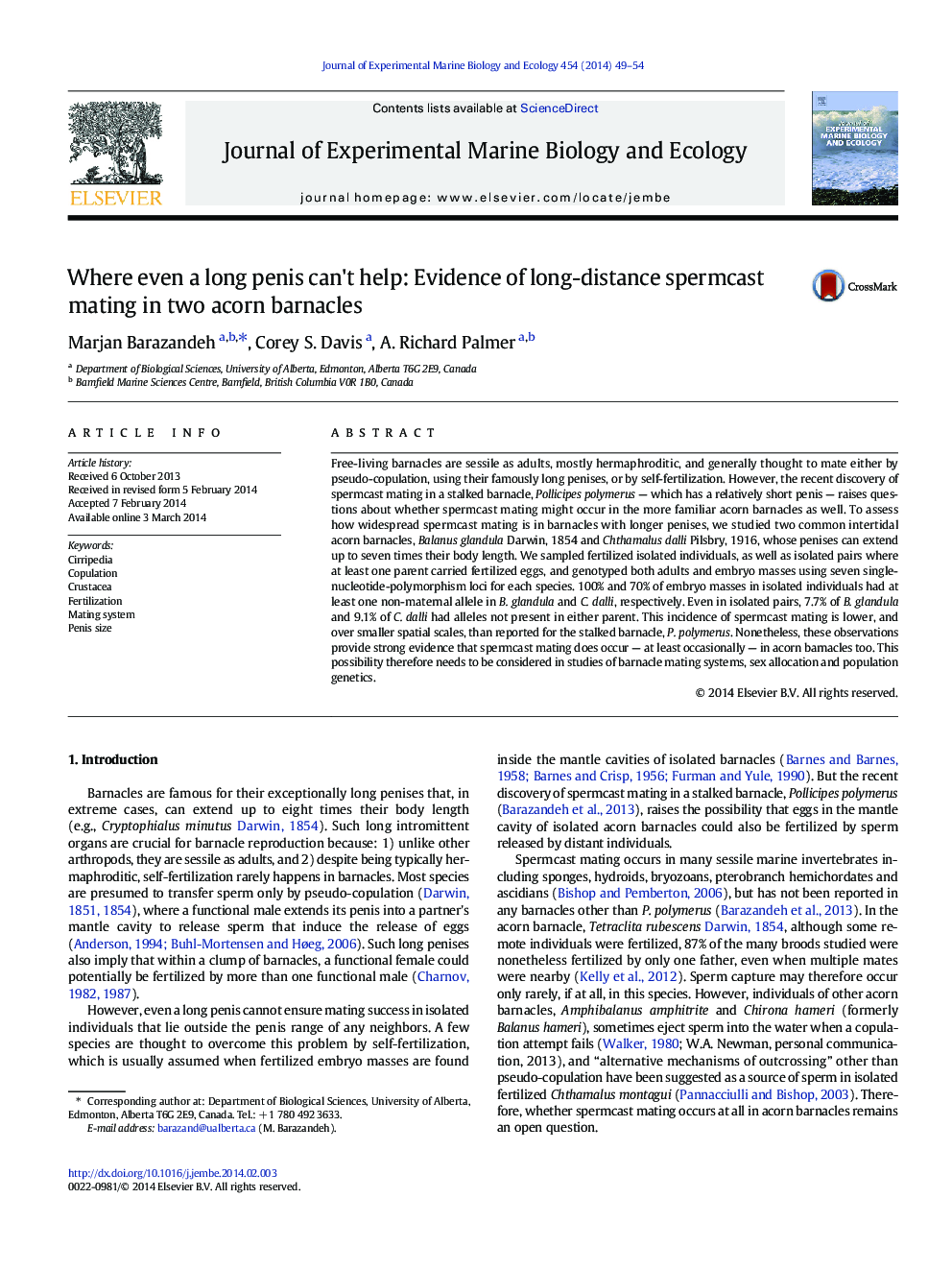| کد مقاله | کد نشریه | سال انتشار | مقاله انگلیسی | نسخه تمام متن |
|---|---|---|---|---|
| 4395596 | 1618421 | 2014 | 6 صفحه PDF | دانلود رایگان |
• Acorn barnacles usually use very long penises to copulate with neighbors.
• We tested for spermcast mating (sperm capture from the water) using SNP markers.
• Spermcast mating occurred, at least occasionally, in both acorn barnacles tested.
• The 2 acorn barnacles spermcast less often than 1 stalked barnacle tested before.
• The 2 acorn barnacles spermcast over shorter distances than the stalked barnacle.
Free-living barnacles are sessile as adults, mostly hermaphroditic, and generally thought to mate either by pseudo-copulation, using their famously long penises, or by self-fertilization. However, the recent discovery of spermcast mating in a stalked barnacle, Pollicipes polymerus — which has a relatively short penis — raises questions about whether spermcast mating might occur in the more familiar acorn barnacles as well. To assess how widespread spermcast mating is in barnacles with longer penises, we studied two common intertidal acorn barnacles, Balanus glandula Darwin, 1854 and Chthamalus dalli Pilsbry, 1916, whose penises can extend up to seven times their body length. We sampled fertilized isolated individuals, as well as isolated pairs where at least one parent carried fertilized eggs, and genotyped both adults and embryo masses using seven single-nucleotide-polymorphism loci for each species. 100% and 70% of embryo masses in isolated individuals had at least one non-maternal allele in B. glandula and C. dalli, respectively. Even in isolated pairs, 7.7% of B. glandula and 9.1% of C. dalli had alleles not present in either parent. This incidence of spermcast mating is lower, and over smaller spatial scales, than reported for the stalked barnacle, P. polymerus. Nonetheless, these observations provide strong evidence that spermcast mating does occur — at least occasionally — in acorn barnacles too. This possibility therefore needs to be considered in studies of barnacle mating systems, sex allocation and population genetics.
Journal: Journal of Experimental Marine Biology and Ecology - Volume 454, May 2014, Pages 49–54
